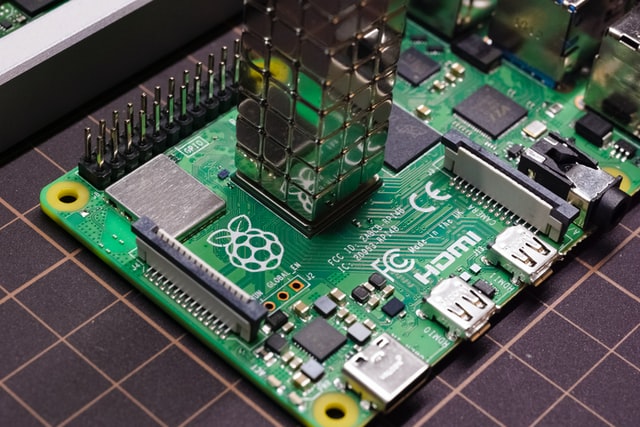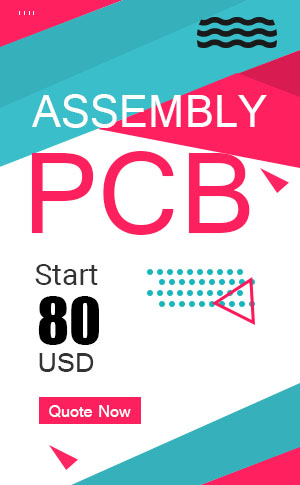General, quoting & support.
Add: Building E, No.58, Nanchang Road, Xixiang , Baoan District Shenzhen City, Guangdong, China
Tel : 0755-27348887
Fax : 0755-27349876
E-mail : svc@pcbastore.com
What is Prepreg?
Simon / 2021-04-04
Contents [hide]
Prepreg is an abbreviation derived from the word 'Pre-impregnated'. As the name suggests, prepreg refers to a material, be it carbon, glass fiber or graphite that has been pre-reinforced with resins then later cured. Epoxy resin is commonly used for these types of processes, it is however not limited to it.
The use of prepreg composite materials can be dated way back to when they were being utilized as alternatives during constructions of aircrafts. But what is prepreg used for today? Well, its use is increasingly gaining popularity across all sectors. What stands out is the fact that they are easy to use, have consistent properties and provides a high quality finish.

What is a Prepreg in PCB?
Prepreg plays a vital role in the design and manufacture of Printed Circuit Boards (PCB). Prepreg can simply be described as an insulation layer as it is a dielectric material. During PCB preparation, the prepreg is put between two cores or copper foil so that it offers the desired insulation.
There are various applications of prepreg PCB in manufacturing process:
Multi-layered boards- the prepreg holds the layers of the boards together. When used in such boards, it should have a specific characteristic, it should be smooth.
Complex PCB- to achieve the required thickness of the board, one has to use various types of prepreg.
Advantages of Prepreg
The use of prepreg offers many advantages as opposed to the use of traditional hand layup. Here are some of the benefits of prepreg:
Better conformity, uniformity and quality: During their manufacturing, the amount of ingredients are controlled and therefore the surface achieved is smooth and identical.
Have maximum strength properties: Hand lamination ends up with excess amount of resin that leads to brittleness and reduced overall strength. Prepregs however contain a specified and desired amount of resin that when cured offers efficient properties.
Prepreg offers a consistent and uniform layer of insulation.
Less curing period: The curing period is determined by the thickness of the resin as well as conductivity of the mold. Once the heat curing cycle is complete, the product is ready for service unlike hand lamination where you have to wait for about two days.
Better cosmetics: Prepregs offer better quality as compared to hand lamination. In the process, air bubbles are eliminated to achieve the desired smooth and consistent surface.
Offers good resistance to environmental contaminants and corrosion.
Offers control of laminate and resin thickness
Easy to use
They are environmentally friendly
Less waste: during the curing process, excess resin is precisely removed and easily handled.
Prepregs have many advantages but also have some limitations such as:
Costs- prepregs are quite expensive.
Shelf life- under room temperature, prepregs can stay up to six months. It should be notable that temperatures exceeding room temperatures significantly reduce their shelf life.
The Difference between Prepreg and Laminate
Before we get into the difference between prepreg and laminate, let's first understand what core is. In many instances, people tend not to differentiate the core and prepreg for they are quite similar. The core can simply be described as the product of prepreg and laminate. Compared to prepreg, the core is much rigid as it is dried fully and laminated. Here are some distinctions between prepreg and laminate:
Definition
Prepreg is defined as a core material that is partially or uncured. Laminate on the other hand is a fully cured core material.
Application
Prepreg is used to bind two copper layers or one copper layer and a core. It is an insulation material and therefore retains the separation between the two materials. Laminate, however, is used for isolation. It is a dielectric material with copper on either of its sides.
Stack-up Location
Prepreg is placed between a copper foil and a core or between two cores. Laminate is sandwiched between two copper layers or planes. In other cases, laminate facts as the core of the stack-up board.
Types of Prepreg
Different types of prepregs can be incorporated in PCB depending on the resin type used. Prepregs are classified into two according to the type of resin used.
Thermoplastic prepregs
These are prepregs composite reinforcements made with thermoplastic resins like polypropylene (PP), polyethylene (PE), polyethylene terephthalate (PET) among others. Such prepregs can be offered in unidirectional tape or woven/ stitched fabrics.
The term thermoplastic means that the materials can be melted or softened under high temperatures, molded to a desired shape or structure, and then cooled.
Thermoset prepregs
These are reinforcements made with thermoset resins such as epoxy and phenolic resins. These are the commonly available prepregs in the market.
As opposed to the thermoplastic resin that needs to be softened, thermoset resin begins as a liquid and thus impregnates the reinforcing fiber fully. The resin then goes through partial curing in a process commonly known as the B stage.
With thermoset prepreg, there is no wastage of resin as the excess is precisely removed.
What distinguishes thermoset and thermoplastic prepreg is that thermoplastic is well defined at room temperature and does not have a shelf life.
How to Choose Prepreg in PCB Design
To choose the best prepreg material for your PCB design, you need to first understand the different parts of a PCB stackup and their functions. Some factors to consider when making your selection are:
Type of fiber: Some of the fibers used are glass, basalt, carbon, and aramid.
Fiber form: It is unidirectional or woven?
Type of resin: The commonly used resin type is epoxy. There are other types of resins used and have a significant impact on the application of the prepreg.
Fibre aerial weight
Resin content: Prepregs are available depending on the resin thickness and requirement. They are classified according to the resin content it holds. It could be standard resin, medium, or high resin. The resin content is a significant factor as it determines the pricing rate, the higher the resin content the higher the price.
The resin content also significantly impacts other properties such as dielectric constant, coefficient of thermal expansion, drilling, and etching quality.
Curing method: The curing method determines the strength and quality of the prepregs. This factor ultimately affects its application.
Manufacturing Process of Prepreg
During the preparation of prepreg, a glass fiber weave or cloth is impregnated with a resin. The fibers in a tape are arranged in such a way that they are unidirectional. The resin used is a controlled amount that can be considered viscous to allow stack-ups of desired thickness.
There are three main processes of manufacturing prepreg:
Hot Melt Process
The process involves the application of heat and pressure. It is used in the production of both fabric and unidirectional prepregs. The process can be defined by two distinct stages. The heated resin is first coated with a thin film on a paper substrate. In the prepreg machine, the resin is then left to interact with the reinforcement material. Lastly, using pressure and heat, the resin is reinforced or impregnated into the fiber to give the final result.
Solvent Dip Process
This process involves the use of a solvent bath. It is only effective in the production of fabric prepregs like woven fabrics and high-temperature resins. Here, the resin is dissolved in a solvent bath then the reinforcing fabric is dipped in the solution. The solvent is then dried using a drying oven.
The major disadvantage of this method is the fact that there are solvent remnants on the prepreg and could result in adverse evolution problems.
Resin Film Process
This is the modern method of prepreg preparation and is highly preferred by many manufacturers. In this process, the resin film is controlled to the desired thickness then goes through the prepreg process.
With the resin film process, it is easy to achieve consistency and specified fiber aerial weight since the procedure allows for better control of the resin thickness.
The resin solvents in prepregs are partially cured to ease the handling process. To prevent further polymerization, the same is stored in a cool place. During the manufacture of composite materials, the prepreg is heated so that complete polymerization can be achieved.
Prepregs are processed using various ways depending on their application. Commonly used processing techniques include:
Vacuum bagging: Prepregs cured using this process are used in aerospace, marine industry, automotive, and building railway interiors.
Autoclave: Prepregs cured using this process produce significantly strong laminates. They are therefore used in the production of high-quality composites.
Match moulding process: Used in the production of flat panels, sports equipment, and other industrial application.
Pressure bag process: Prepregs cured in such nature as used in fishing rods, tubes, ski poles, and golf shafts.
Application of Prepregs
Prepregs are commonly utilized in high-performance applications such as in the composite industry. Some highlighted areas of prepreg application include:
Aircraft- used in the manufacture of aerospace components, aircraft flooring, and cargo liners
Carbon composites, high-rise flooring, and impact surfaces
Transmission applications in air conditioning ducting and other electronics
Manufacture of some automotive parts, tooling, and ballistic panes.
Conclusion
Prepreg is an insulation material that stacks copper foils and cores together. It is therefore vital and plays a significant role in the manufacture of an excellent PCB. For any PCB fabrication, the prepreg is critical. Any PCB manufacture should be in a position to master the art of prepregs to develop a specified board.







